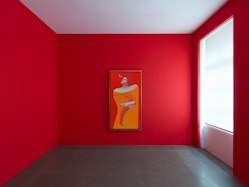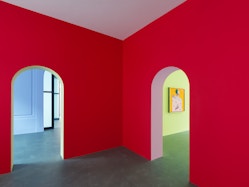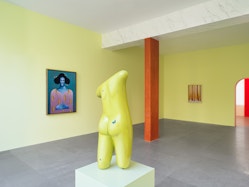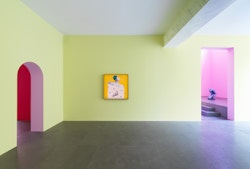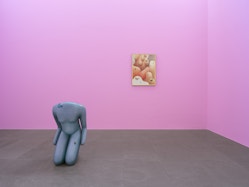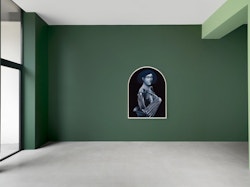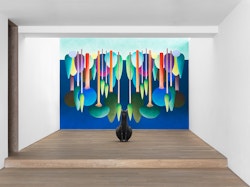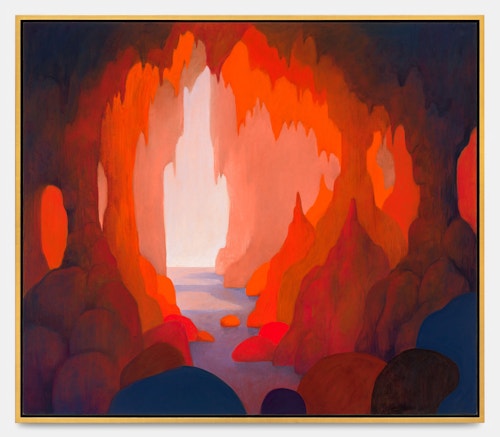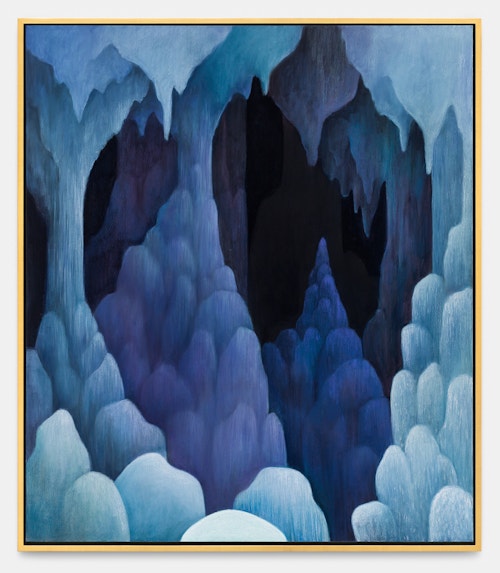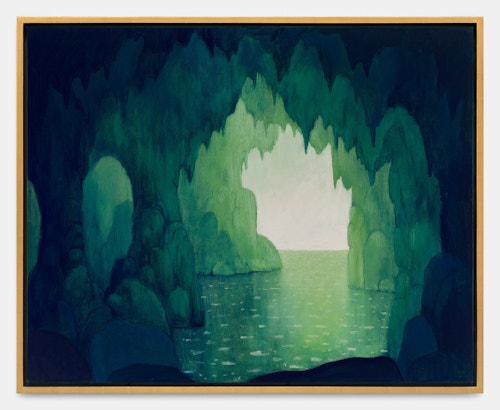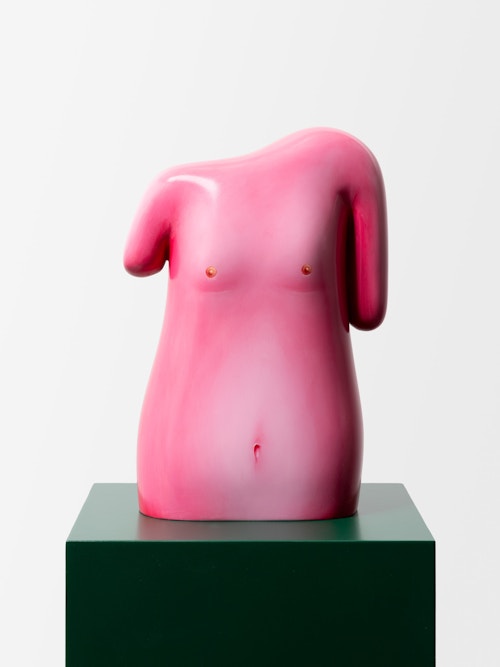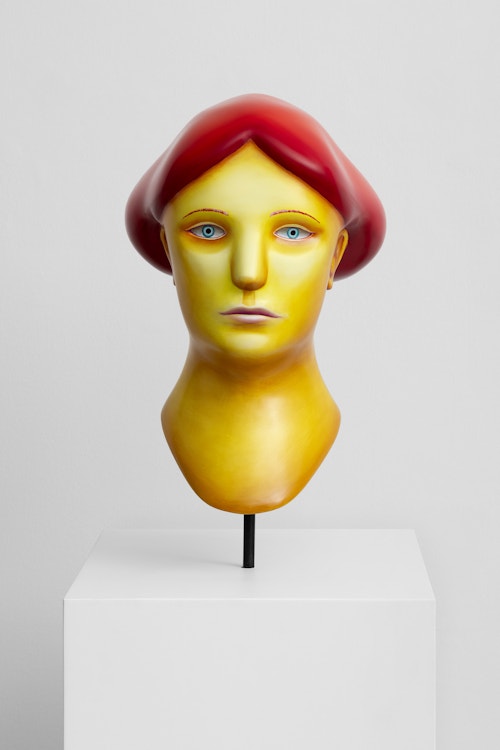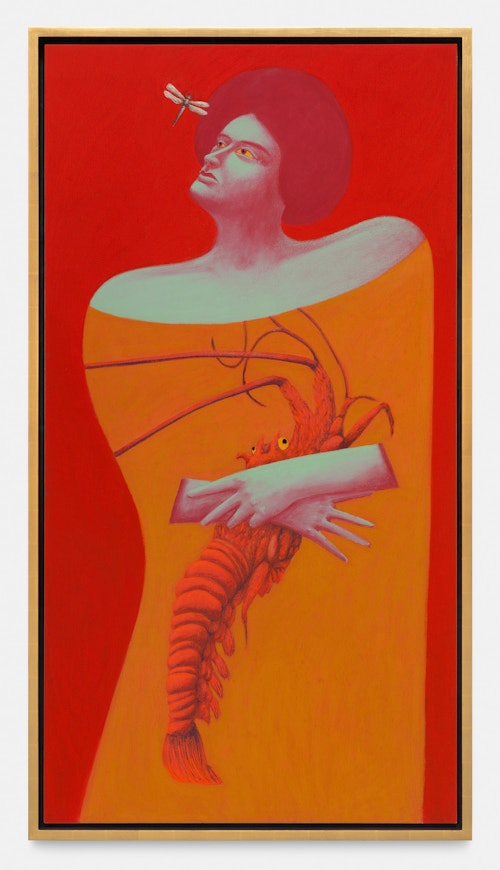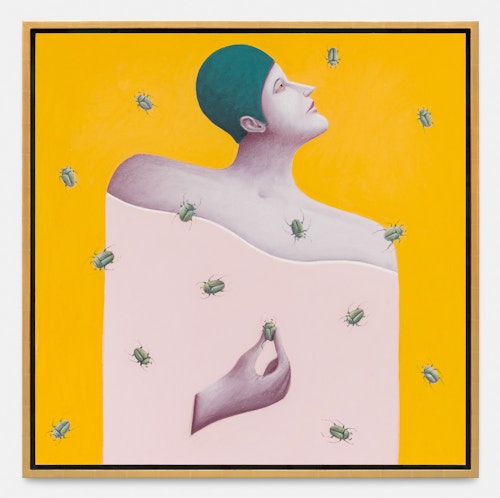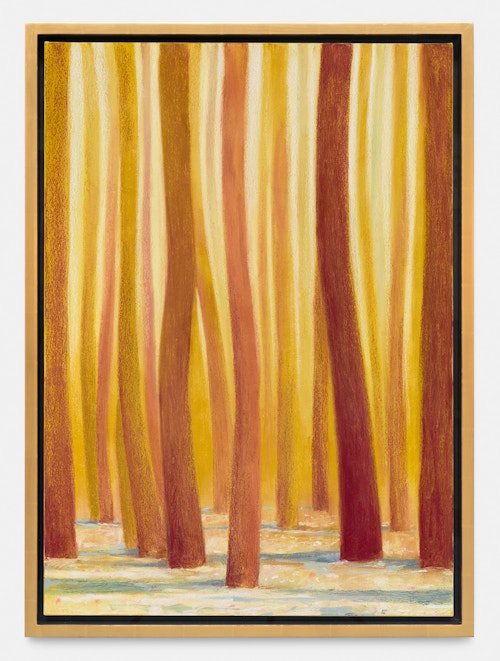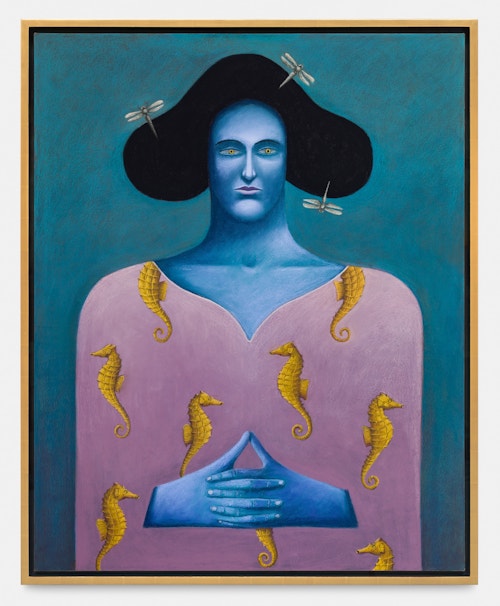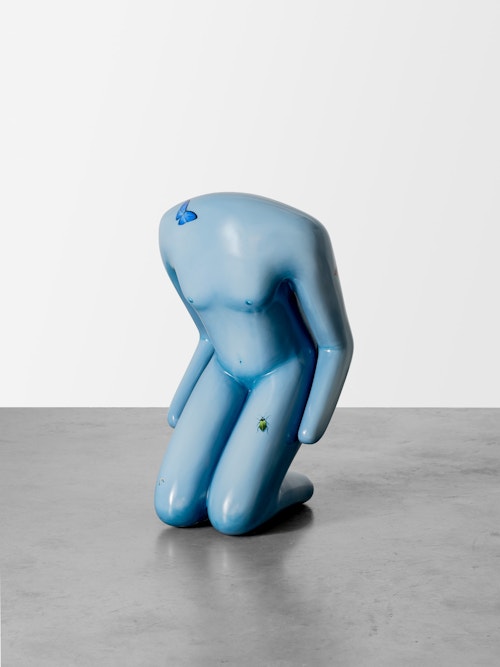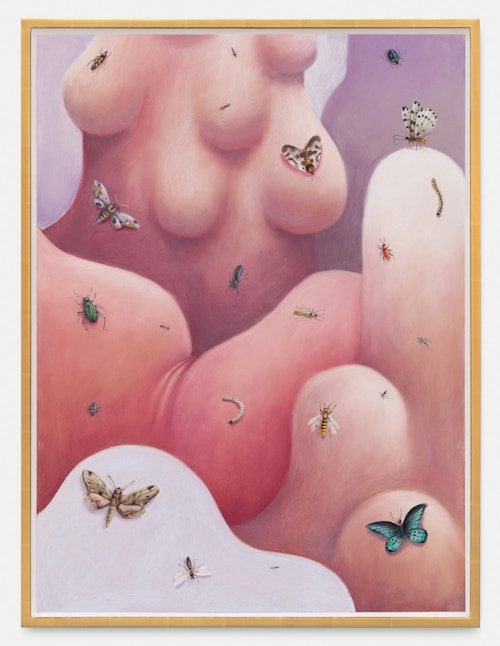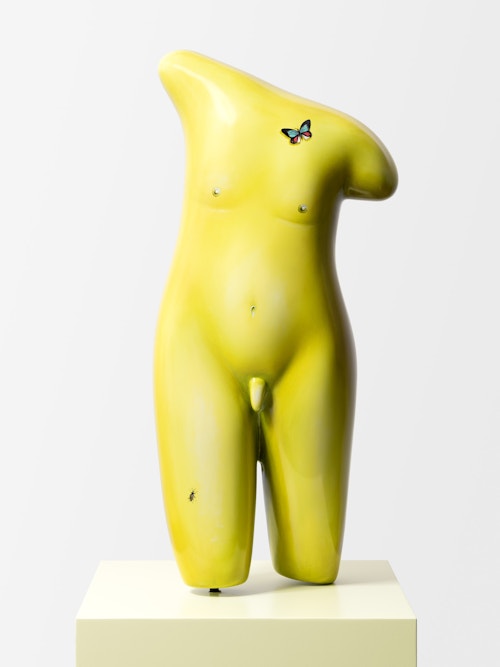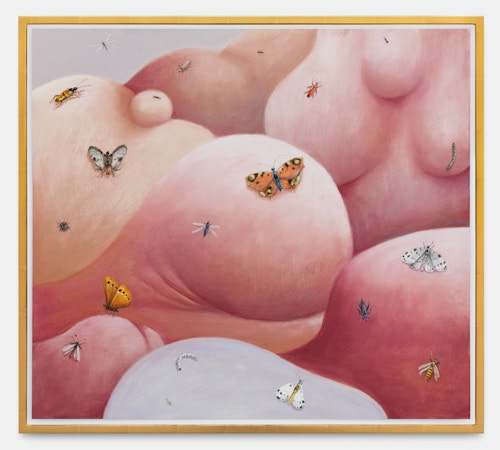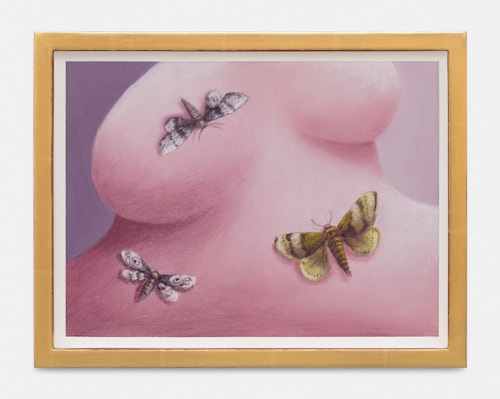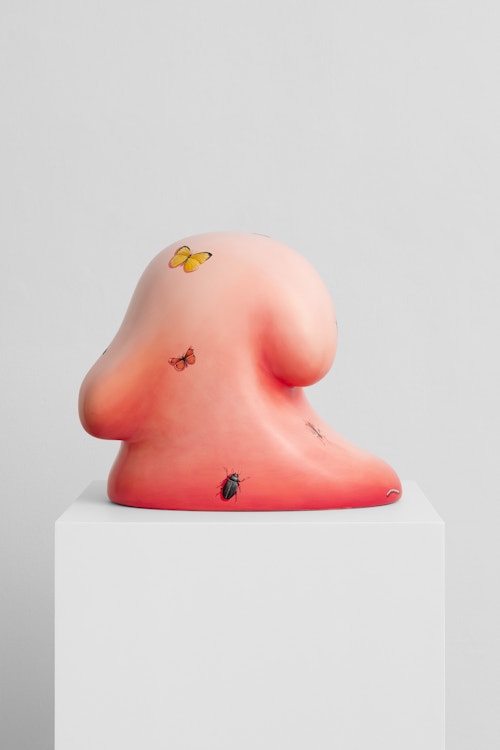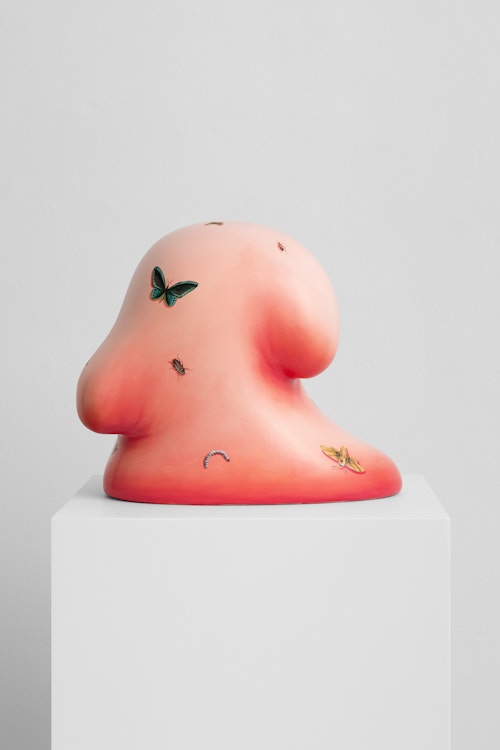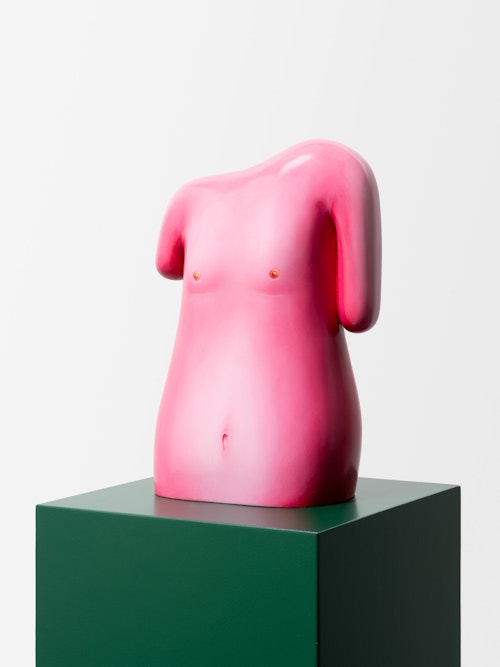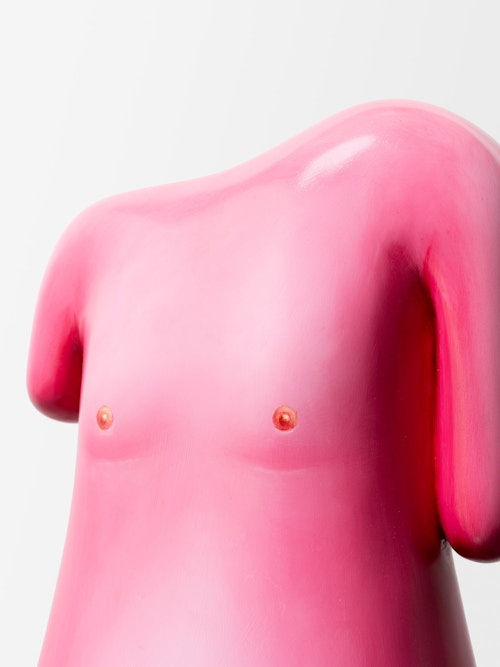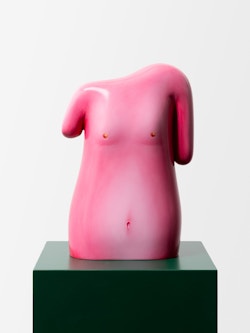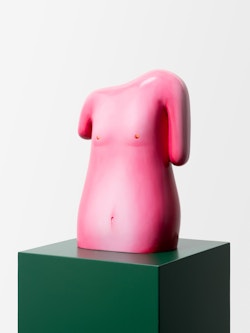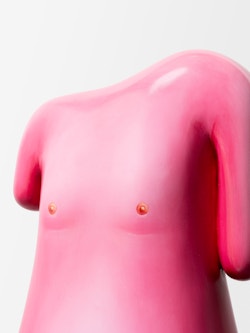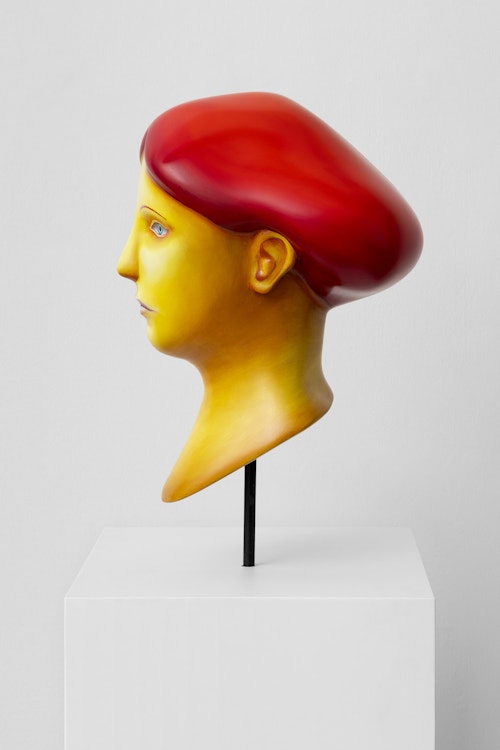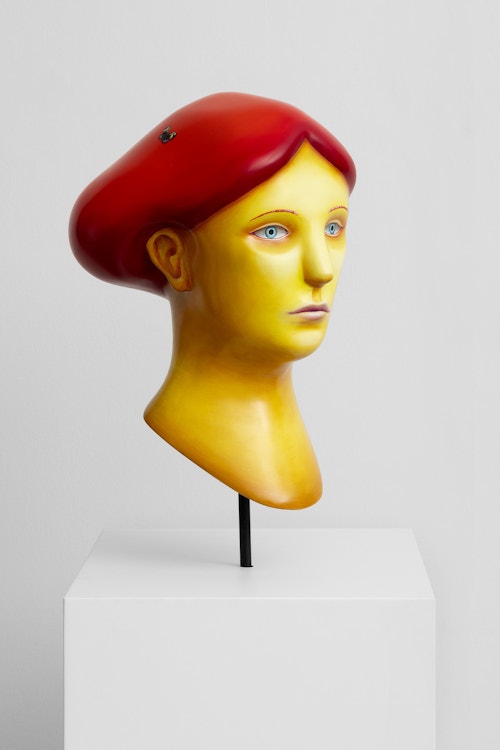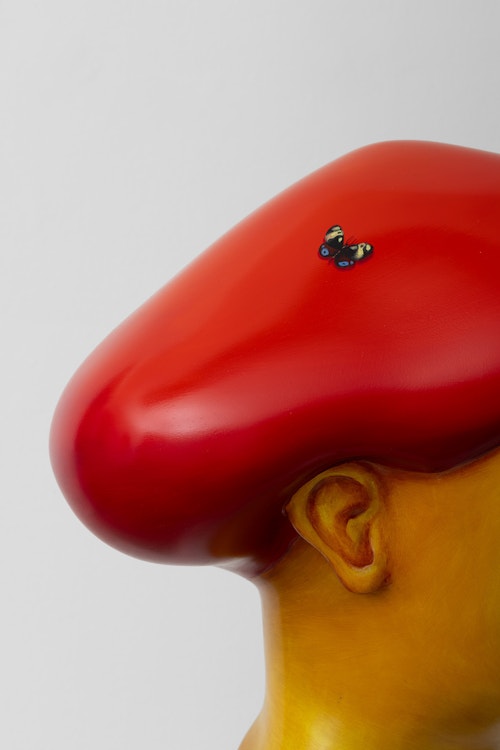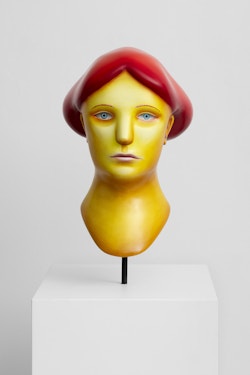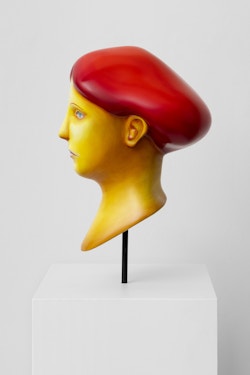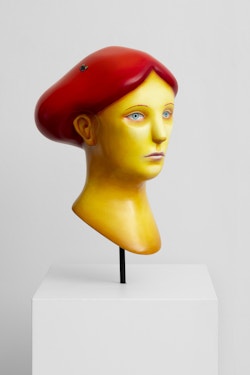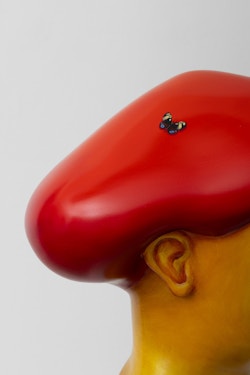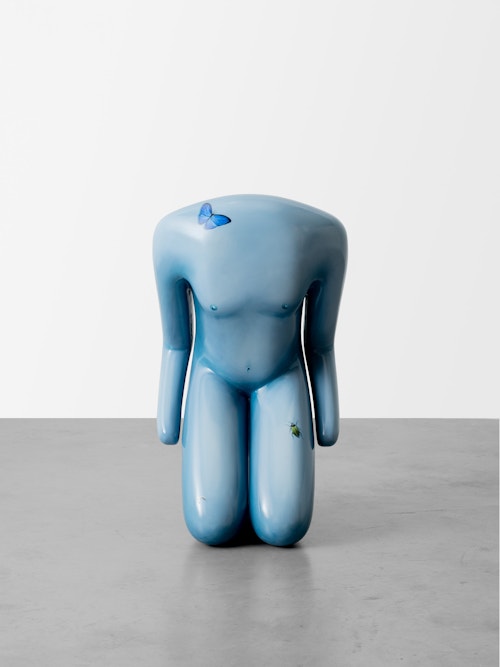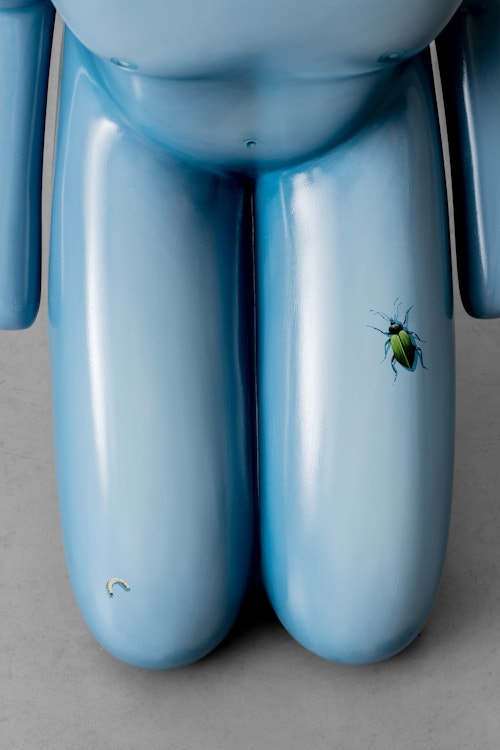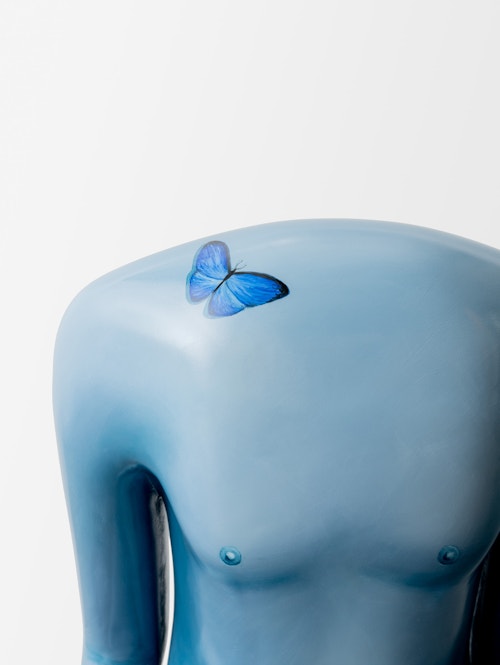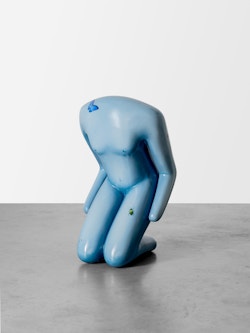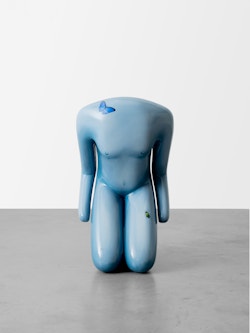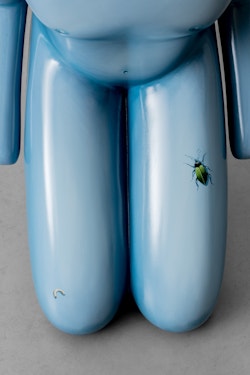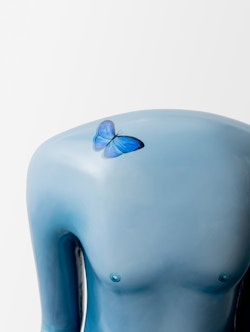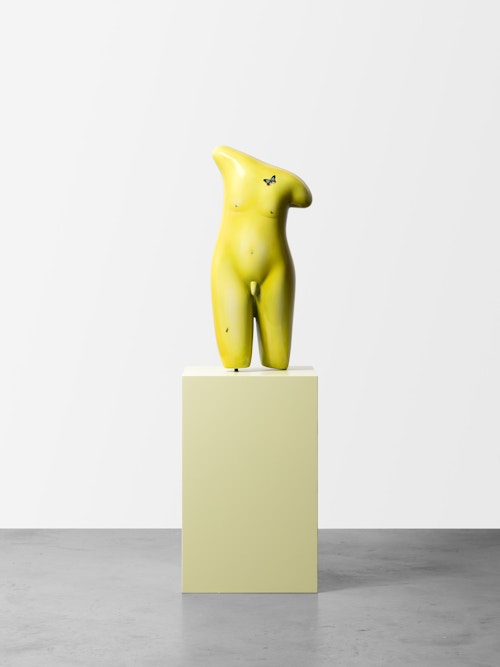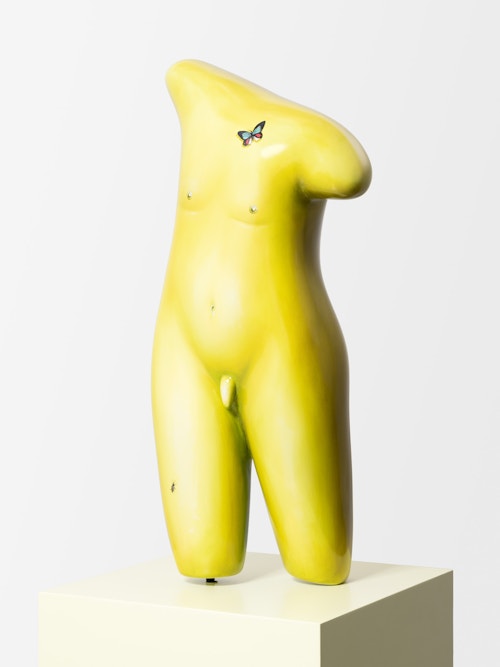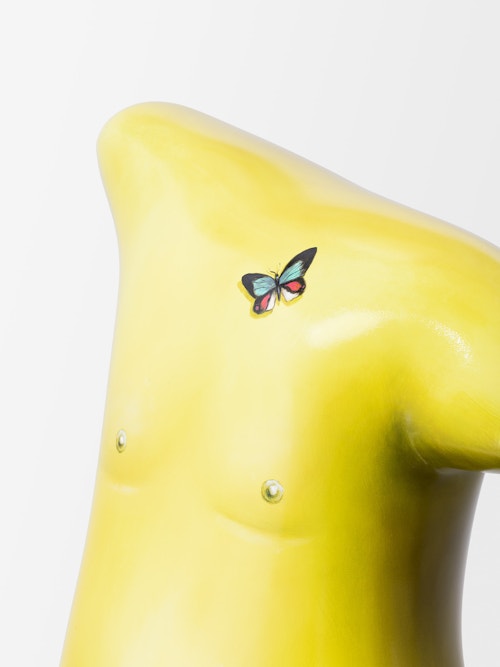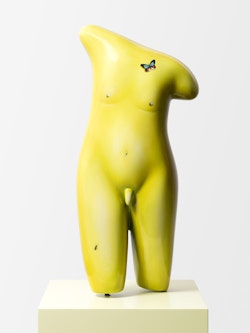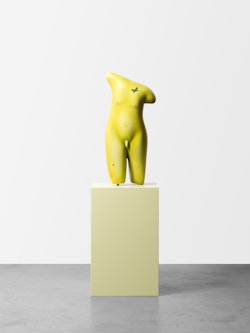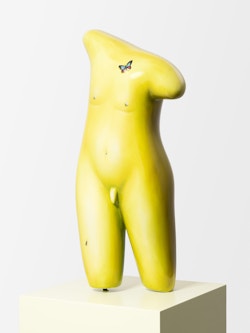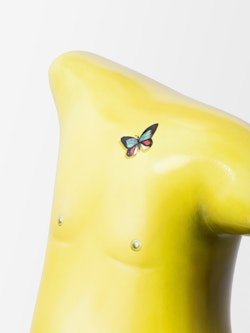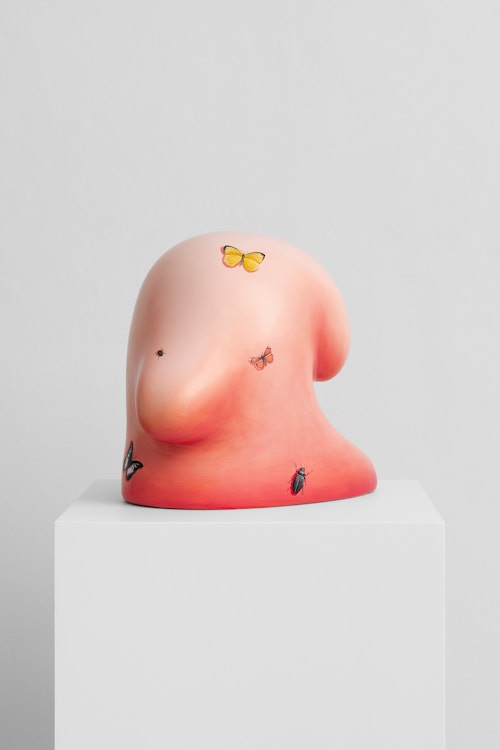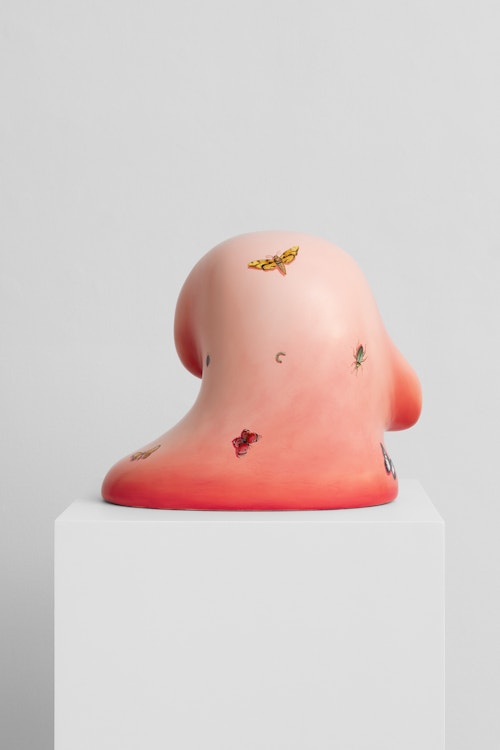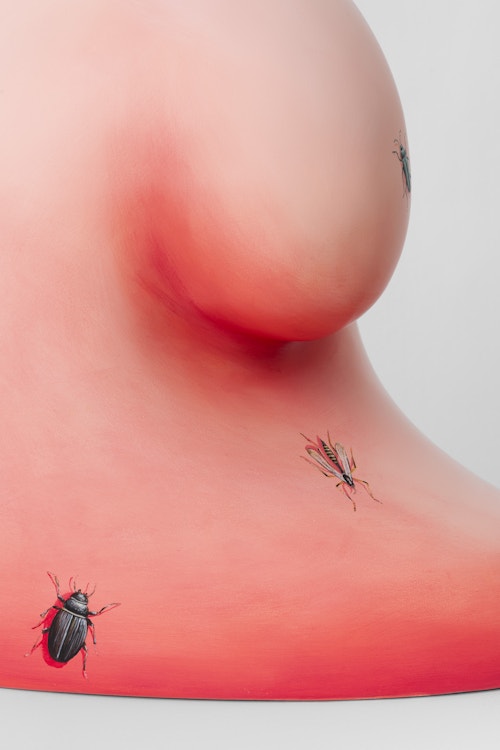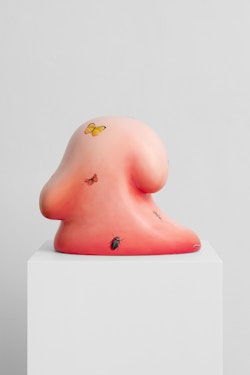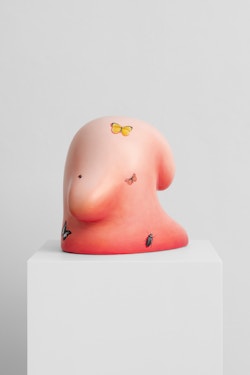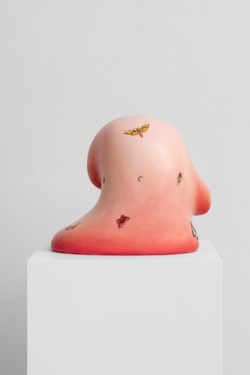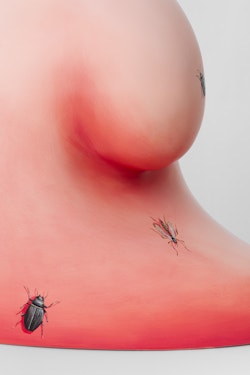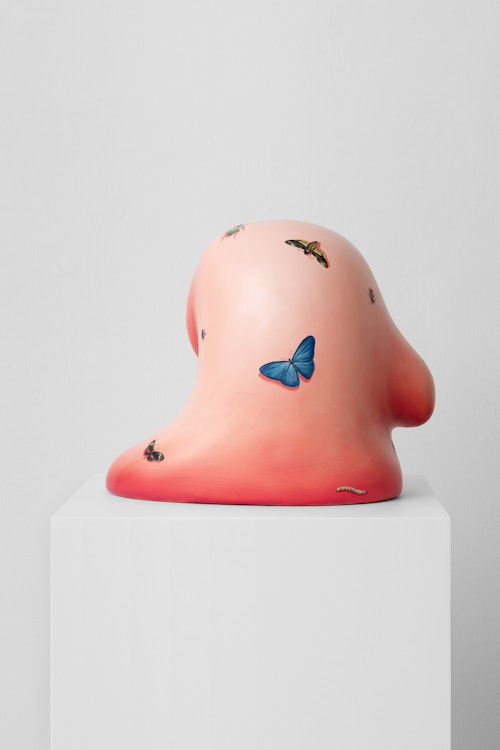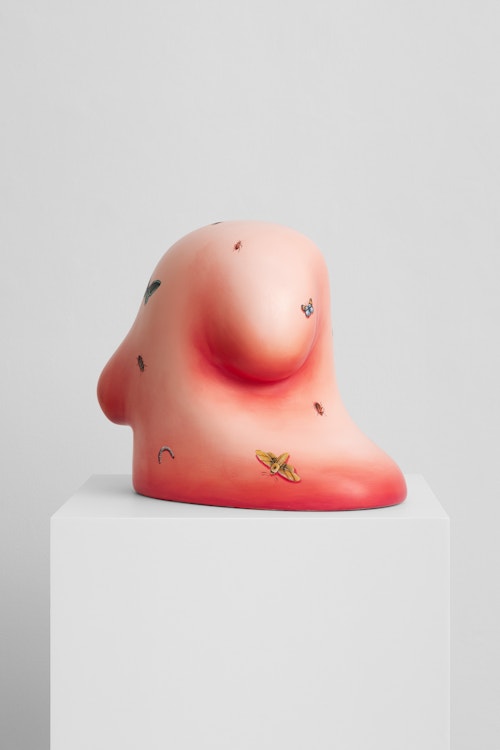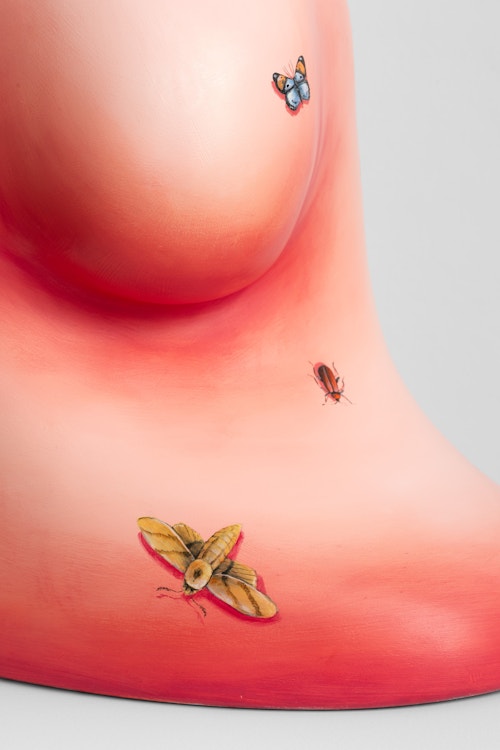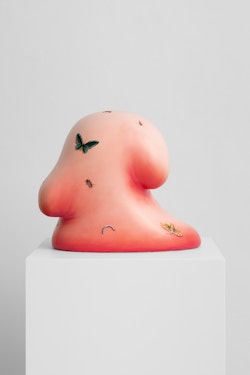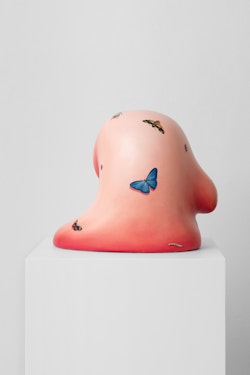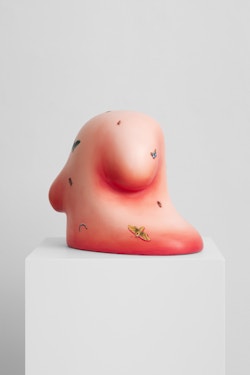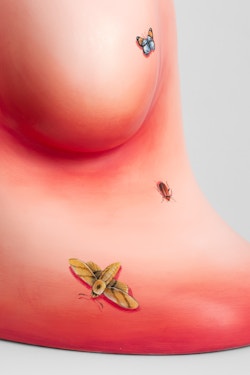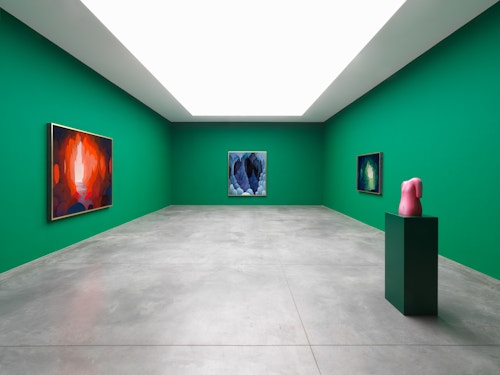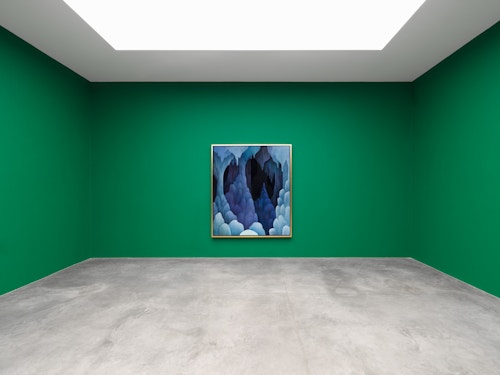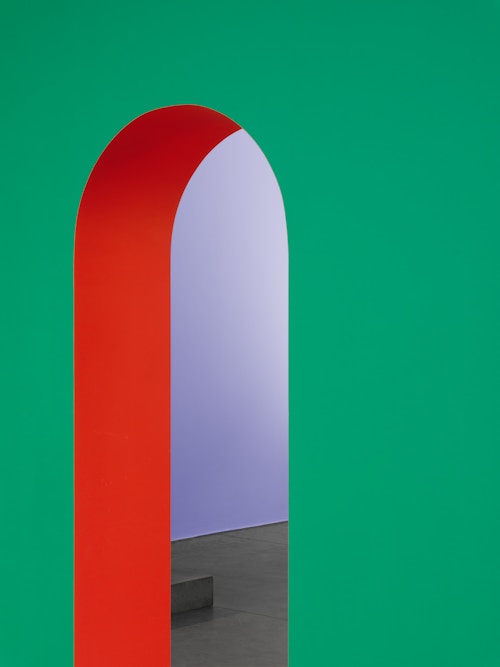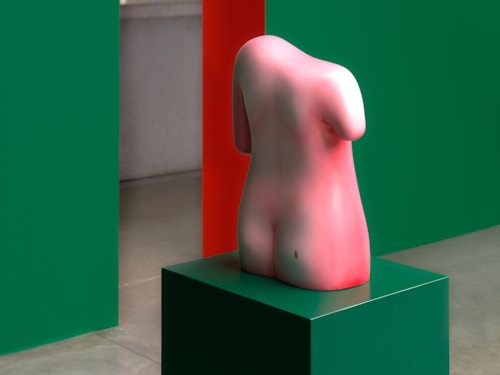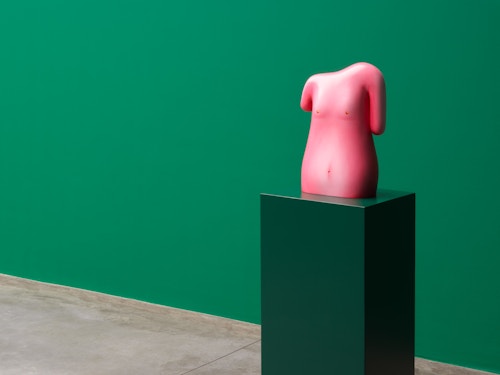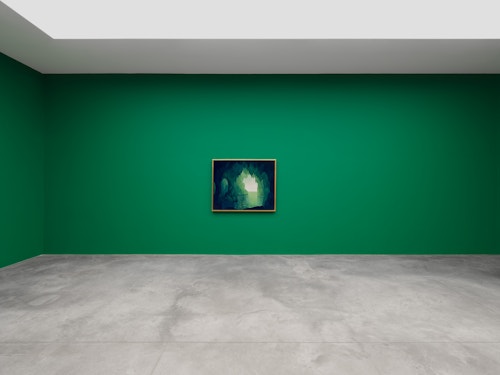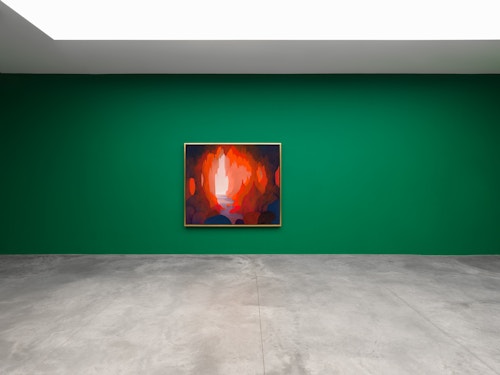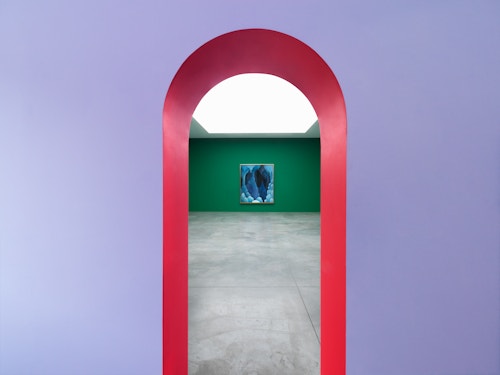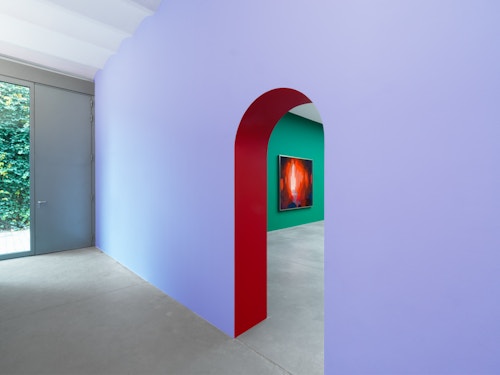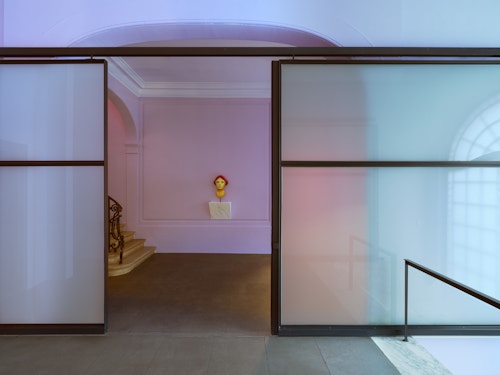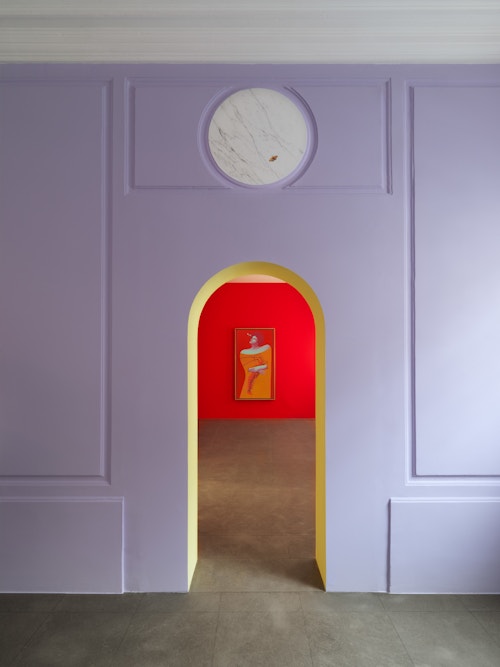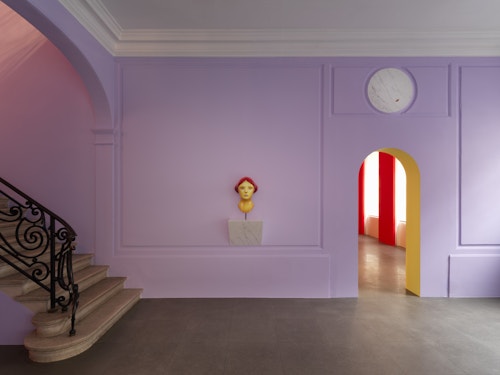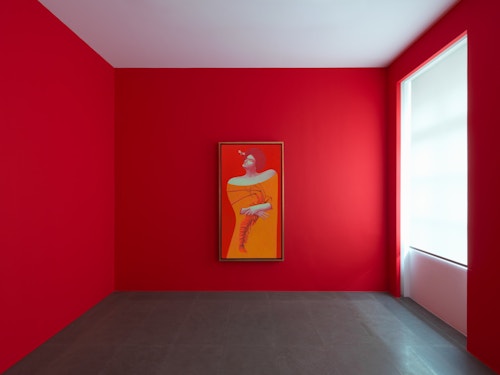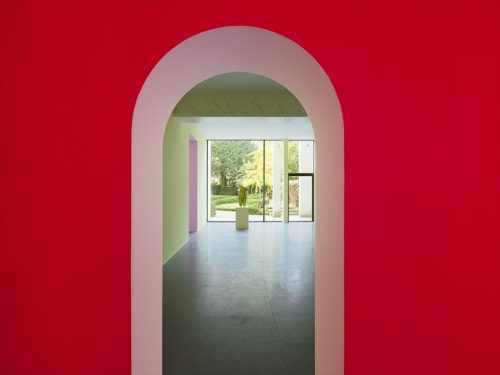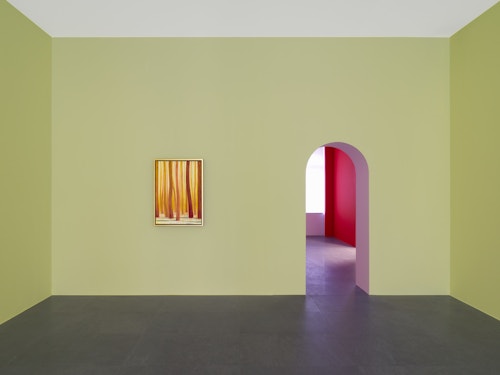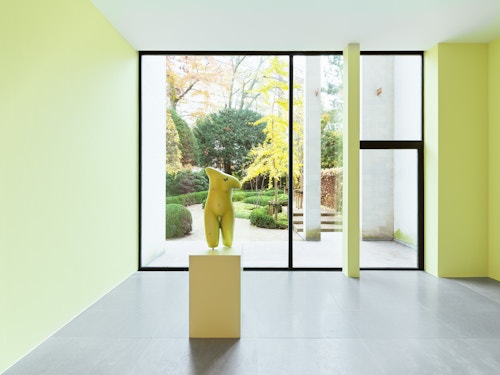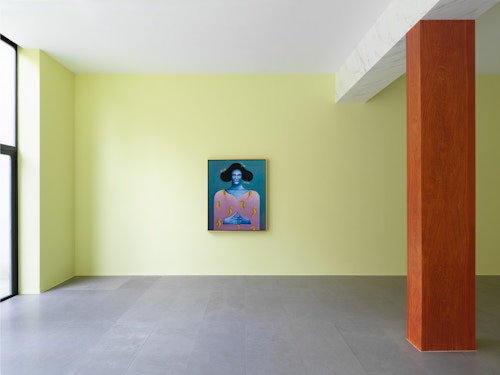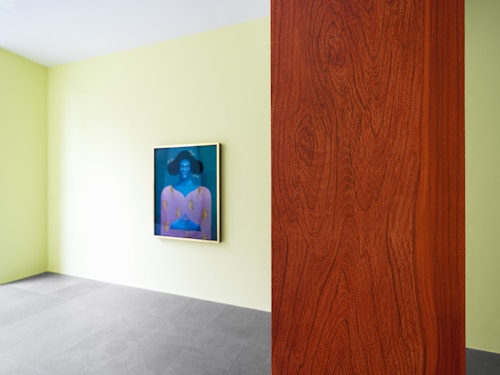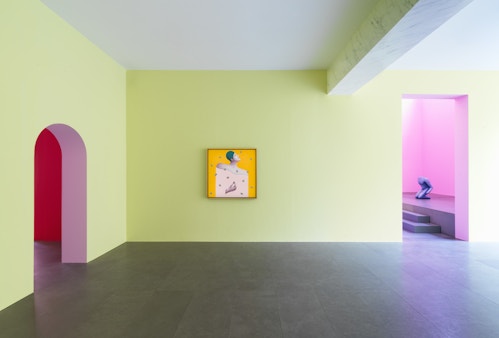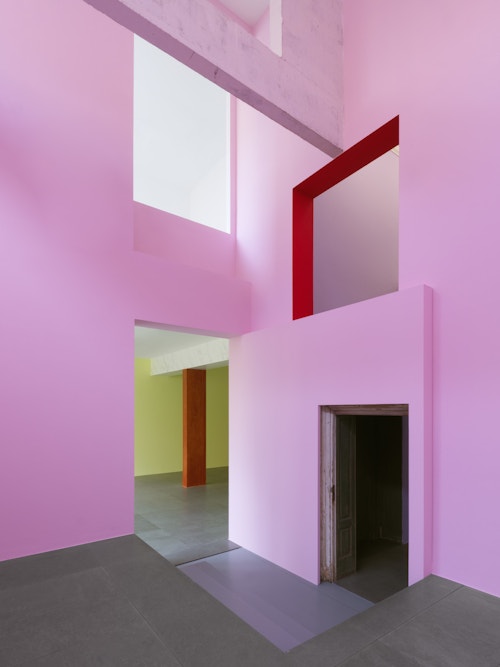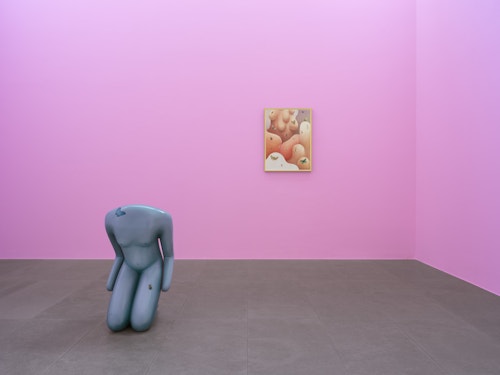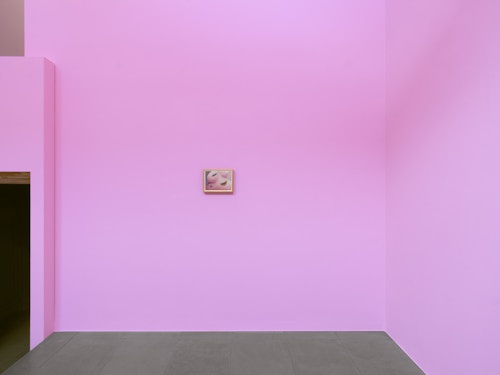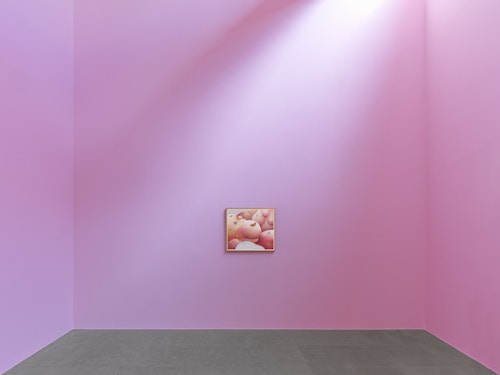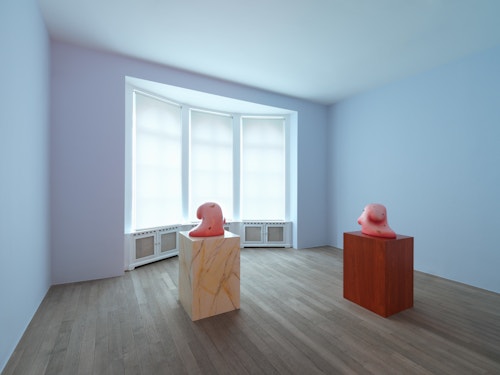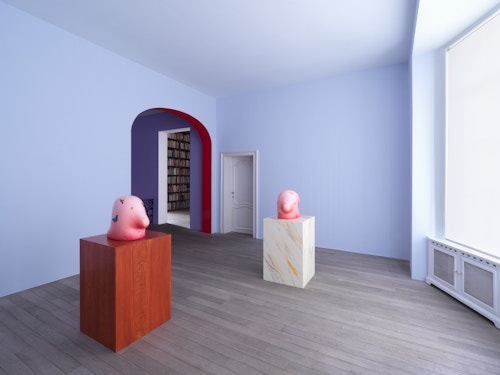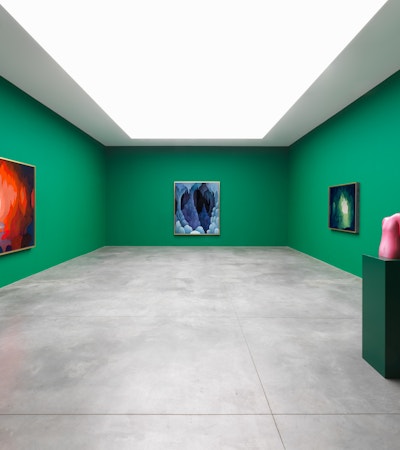
Nicolas Party Grotto
Xavier Hufkens is delighted to announce the opening of a new exhibition by Nicolas Party (b. 1980). Following the large-scale presentation of his work at the Magritte Museum in 2018, Party returns to Brussels with a series of pastels and sculptures that revitalise art historical themes in surprising and innovative ways.
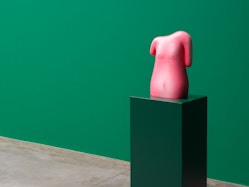
The exhibition’s title, Grotto, alludes to three large-format pastels depicting caves. From Renaissance paintings of hermits through to Courbet’s The Source of the Loue and, more specifically, The Grotto of Manacor (c. 1901) by the Belgian painter William Degouve de Nuncques, depictions of underground caverns conjure up a wealth of historical and philosophical connotations. Inspired by this imagery, Party has created a trio of contemporary monochromes in scintillating shades of red, green and blue. While the blue cave depicted in Grotto forges a direct link with Degouve de Nuncques’ work, the three pastels also combine to form the red-green-blue colour palette (the RGB colour model that allows for the sensing, representation and display of images in digital systems).
Alongside these works, Nicolas Party presents two ethereal pastels that recall the minutely detailed nature studies of Jan van Kessel the Elder (Antwerp, 1626-1679), who specialised in trompe l’oeil compositions of beetles, insects, caterpillars and butterflies. Within Insects, the artist borrows from Van Kessel’s repertoire and unleashes a swarm of similar creatures across undulating landscapes of fleshy, biomorphic forms. These, in turn, have undercurrents of their own, calling to mind the voluptuous contours of certain Surrealist and mid twentieth-century sculptures. In merging these unusual references, Party creates tableaux that are as mesmerising as they are unsettling. While the meticulous detail, luminous colours and sumptuous textures evoke a sense of wonder, the indeterminate forms and insects tap into darker fears related to death, decay and human transience. Here, Party uses his distinctive and highly stylised visual aesthetic to transform widely divergent themes into works that defy easy categorisation.
The natural world also looms large in three figurative pastels that contain dragonflies, a langoustine, seahorses and scarabs: beautifully aesthetic creatures that have long been associated with transformation, colour, metamorphosis, magic and the mutability of life. In these illusory pastels, Party plays with colour and perspective to create a series of visual paradoxes that defy conventional logic. With immense dexterity, he disrupts the relationships of the key pictorial elements — background, figure and creature/s —to create a series of unfathomable images: what do we really see? Like Surrealist collages or Symbolist paintings, these enigmatic depictions elicit subconscious and poetic associations. The eerie atmosphere is further enhanced by the androgynous nature of the figures and the dazzling use of dissonant colours.
A new series of brightly-painted sculptures on equally vibrant plinths act as counterpoints to the works in pastel. Taking the form of busts and torsos, they clearly refer to the world of antique sculpture. But here too, nothing is quite what it seems. Party’s three-dimensional works both emulate and deviate from the classical norms. Subtle manipulations have an alienating effect: the fractured limbs are strangely polished while torsos are smooth and featureless. Executed in coruscating, high-gloss hues, their seductive yet uncanny appearance is also informed by Party’s long-standing interest in polychromy (the ancient technique of painting sculptures). His work is a reminder that appearances can be deceptive: most classical sculptures were once brightly coloured. Other works, such as the bust and biomorphic mass, directly echo the pastels. Party uses state-of-the-art 3D rendering processes and CNC milling techniques to create the basic sculptural forms. He subsequently paints the works using more traditional techniques, thereby creating lustrous surfaces that are as sleek and impenetrable as the pastels are soft and vulnerable.
Nicolas Party (b. 1980, Lausanne; lives and works in New York). Selected solo exhibitions include: Pastel, FLAG Art Foundation, New York, NY, USA (2019); Nicolas Party at Marble House, Marble House, Newport, RI, USA (2019); Arches, M WOODS, Beijing (2018-2019); Magritte Parti, Magritte Museum, Brussels (2018); Nicolas Party: Speakers, Modern Art, Oxford (2017); Sunrise, Sunset, Hirshhorn Museum and Sculpture Garden, Washington DC (2017); Nicolas Party in the Garden Room, Palazzo Antinori, Florence (2016); Hammer Projects: Nicolas Party, Hammer Museum, Los Angeles (2016); Pathway, Dallas Museum of Art, Dallas (2016); Cimaise, CAN: Centre d’art Neuchâtel, Neuchâtel (2016); Boys and Pastel, Inverleith House, Edinburgh (2015).
